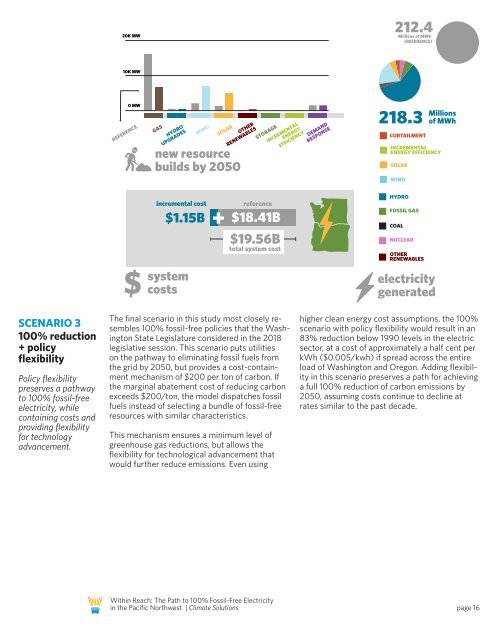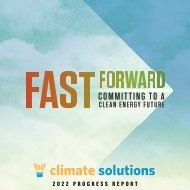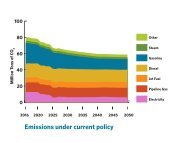within reach - 04
within reach - 04
within reach - 04
You also want an ePaper? Increase the reach of your titles
YUMPU automatically turns print PDFs into web optimized ePapers that Google loves.
20K MW<br />
212.4<br />
Millions of MWh<br />
(REFERENCE)<br />
10K MW<br />
0 MW<br />
REFERENCE<br />
GAS<br />
218.3<br />
CURTAILMENT<br />
SOLAR<br />
WIND<br />
HYDRO<br />
incremental cost<br />
reference<br />
FOSSIL GAS<br />
$1.15B + $18.41B<br />
COAL<br />
HYDRO<br />
UPGRADES<br />
new resource<br />
builds by 2050<br />
system<br />
$ costs<br />
WIND<br />
SOLAR<br />
OTHER<br />
RENEWABLES<br />
STORAGE<br />
INCREMENTAL<br />
ENERGY<br />
EFFICIENCY<br />
DEMAND<br />
RESPONSE<br />
$19.56B<br />
total system cost<br />
electricity<br />
generated<br />
Millions<br />
of MWh<br />
INCREMENTAL<br />
ENERGY EFFICIENCY<br />
NUCLEAR<br />
OTHER<br />
RENEWABLES<br />
SCENARIO 3<br />
100% reduction<br />
+ policy<br />
flexibility<br />
Policy flexibility<br />
preserves a pathway<br />
to 100% fossil-free<br />
electricity, while<br />
containing costs and<br />
providing flexibility<br />
for technology<br />
advancement.<br />
The final scenario in this study most closely resembles<br />
100% fossil-free policies that the Washington<br />
State Legislature considered in the 2018<br />
legislative session. This scenario puts utilities<br />
on the pathway to eliminating fossil fuels from<br />
the grid by 2050, but provides a cost-containment<br />
mechanism of $200 per ton of carbon. If<br />
the marginal abatement cost of reducing carbon<br />
exceeds $200/ton, the model dispatches fossil<br />
fuels instead of selecting a bundle of fossil-free<br />
resources with similar characteristics.<br />
This mechanism ensures a minimum level of<br />
greenhouse gas reductions, but allows the<br />
flexibility for technological advancement that<br />
would further reduce emissions. Even using<br />
higher clean energy cost assumptions, the 100%<br />
scenario with policy flexibility would result in an<br />
83% reduction below 1990 levels in the electric<br />
sector, at a cost of approximately a half cent per<br />
kWh ($0.005/kwh) if spread across the entire<br />
load of Washington and Oregon. Adding flexibility<br />
in this scenario preserves a path for achieving<br />
a full 100% reduction of carbon emissions by<br />
2050, assuming costs continue to decline at<br />
rates similar to the past decade.<br />
climate solutions<br />
Within Reach: The Path to 100% Fossil-Free Electricity<br />
accelerating in the the Pacific transition to Northwest our clean energy future | Climate Solutions<br />
page 16








